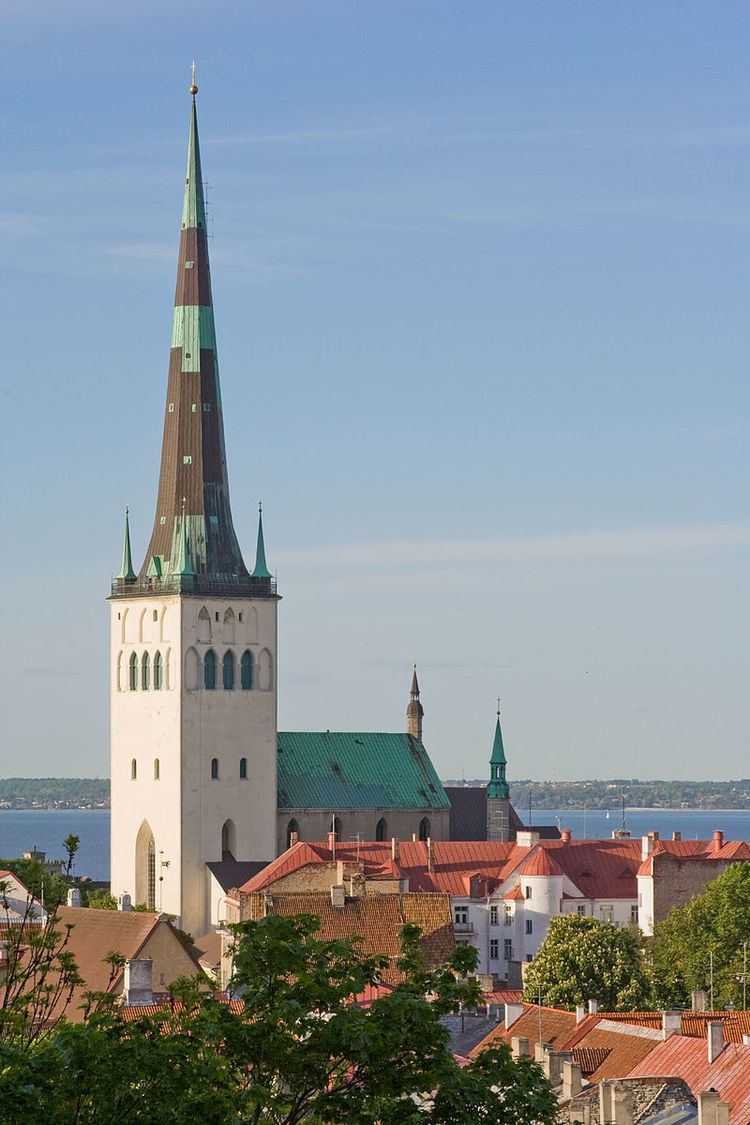 | ||
Estonia, historically a Lutheran Protestant area, is one of the "least religious" countries in the world in terms of declared attitudes, with only 14% of the population declaring religion an important part of their daily life. The religious population is predominantly Christian and includes followers of 90 affiliations, most prominently Orthodox Christians and Lutheran Christians. According to Ringo Ringvee, "religion has never played an important role on the political or ideological battlefield" and that the "tendencies that prevailed in the late 1930s for closer relations between the state and Lutheran church were ended with the Soviet occupation in 1940". He further states that "the chain of religious traditions was broken in most families" under the Soviet policy of state atheism. Before the Second World War, Estonia was approximately 80% Protestant; overwhelmingly Lutheran.
Contents
Between 2001 and 2011 census, Eastern Orthodoxy overtook Lutheranism to become the largest Christian denomination in the country due to increasing atheist believes among Estonians. Lutheranism still remains the most popular religious group among ethnic Estonians, while Eastern Orthodoxy is practised mainly by ethnic Russian minority.
History
In the 13th century, the Teutonic Knights brought Christianity to Estonia and during the Protestant Reformation, the Estonian Evangelical Lutheran Church became the established church. Before the Second World War, Estonia was approximately 80% Protestant; overwhelmingly Lutheran, with individuals adhering to Calvinism, as well as other Protestant branches. Robert T. Francoeur and Raymond J. Noonan write that "In 1925, the church was separated from the state, but religious instruction remained in the schools and clergymen were trained at the Faculty of Theology at Tartu University. With the Soviet occupation and the implementation of anti-Christian legislation, the church lost over two thirds of its clergy. Work with children, youth, publishing, and so on, was banned, church property was nationalized, and the Faculty of Theology was closed." Aldis Purs, a professor of history at the University of Toronto writes that in Estonia, as well as Latvia, some evangelical Christian clergy attempted to resist the Soviet policy of state atheism by engaging in anti-regime activities such as Bible smuggling. The text titled World and Its Peoples: Estonia, Latvia, Lithuania, and Poland, published by the Marshall Cavendish, states that in addition to the Soviet antireligious campaign in Estonia, which mandated the confiscation of church property and deportation of theologians to Siberia, many "churches were destroyed in the German occupation of Estonia, from 1941 through 1944, and in World War II (1939-1945)". After the dissolution of the Soviet Union, this antireligious legislation was annulled.
Statistics
According to the Eurobarometer Poll 2010, 18% of Estonian citizens responded that "they believe there is a God", whereas 50% answered that "they believe there is some sort of spirit or life force" and 29% that "they do not believe there is any sort of spirit, god, or life force". This, according to the survey, would have made Estonians the most non-religious people in the then 25-member European Union. A survey conducted in 2006–2008 by Gallup showed that 14% of Estonians answered positively to the question: "Is religion an important part of your daily life?", which was the lowest among 143 countries polled.
According to new polls about Religiosity in the European Union in 2012 by Eurobarometer found that Christianity is the largest religion in Estonia accounting 45% of Estonians. Eastern Orthodox are the largest Christian group in Estonia, accounting for 17% of Estonia citizens, while Protestants make up 6%, and Other Christian make up 22%. Non believer/Agnostic account 22%, Atheist account's 15%, Undeclared account's 15%.
Less than a third of the population define themselves as believers; of those most are Eastern Orthodox, predominantly among the Russian minority, or Lutheran. The Lutheran denomination is estimated to have 180,000 registered members as of 2014. There are also a number of smaller Muslim, Protestant, Jewish, and Buddhist groups. The organisation Maavalla Koda (Taaraism) unites adherents of animist traditional religions. The Russian neopagan organisation "Vene Rahvausu Kogudus Eestis" is registered in Tartu.
Censuses
Between 2000 and 2011, the percentage of Orthodox Christians increased in tandem with increasing religiosity in Russia, outstripping the overall decline in the Russian minority, while Protestantism continued to decline.
1Population, persons aged 15 and older.
